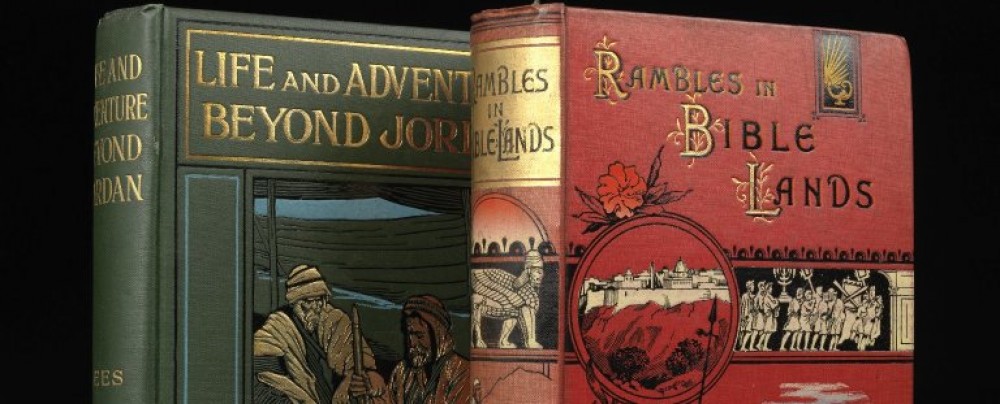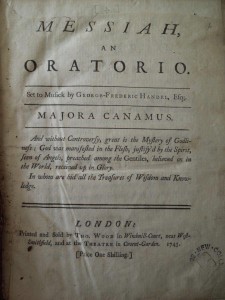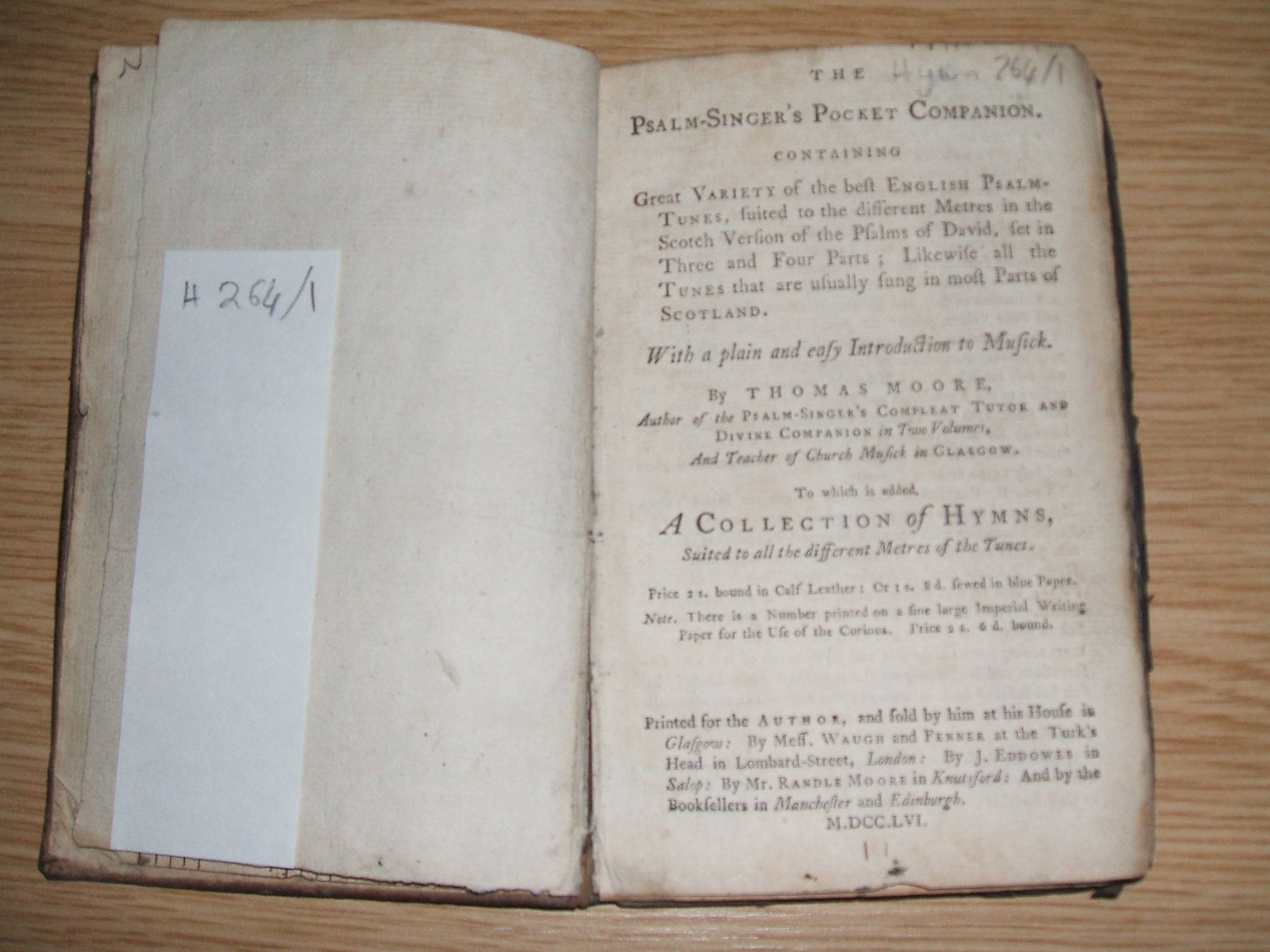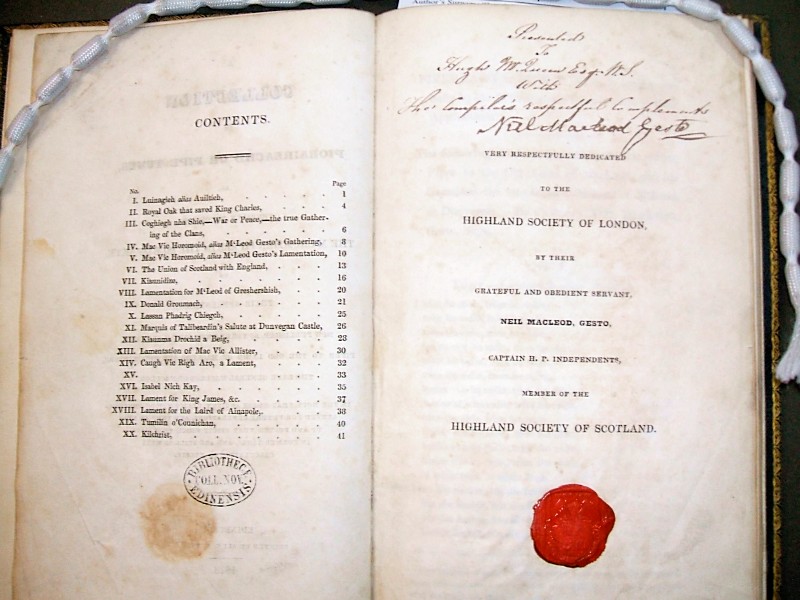It’s not every day that you find a rare edition of Handel’s Messiah in your library but I’m delighted to say that we have one at New College Library! This recently catalogued pamphlet from our Special Collections appears to be the first printing in England, and second edition overall of the libretto of Handel’s Messiah (The first edition was in Dublin.) It is also the first edition printed in England by six years. According to Elizabeth Lawrence, EUL Assistant Rare Books Librarian, “The oratorio was first performed in Dublin in 1742, and then again in London in March 1743. The publication we have, the libretto, known as the ‘word book’, was published to sell at the theatre, so the audience had half an idea what was going on. There are no copies of this edition currently on ESTC.”
Tag Archives: music
Hymnology Collections : Ravenscroft’s Book of Psalms
A guest post from Oreste de Tommasso, one of the Funk Project Cataloguers at New College Library.

A reprint of the tunes in Ravenscroft’s Book of Psalms : With introductory remarks. London, 1845. New College Library, Hymn 345.
This item, an edition of the Whole Book of Psalmes, was recently catalogued as part of the Hymnology Collections Project. It’s typical of the many nineteenth century items in the Hymnology Collection, much of which was originally collected by the Edinburgh bookseller James Thin. The pages in the volume are laid within a red line frame border, with an initial capital letter decorated in red ink. The cover title is within a rounded decorated lozenge in a golden colour.
The Whole Booke of Psalmes is one of the most important psalters of the period, though it contains much music from earlier publications. This collection includes national hymns (such as Dumferline, Dundee, and Glasgow) whose authorship remains uncertain, while the harmonizers into four parts are some of the most celebrated musicians of the Tudor era. Names such as Thomas Tallis, John Dowland, Thomas Morley, Giles Farnaby, Thomas Tomkins, all feature here. Thomas Ravescroft himself contributed fifty-five of its 105 settings.
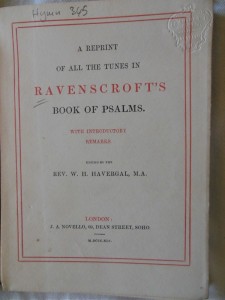 Ravenscroft was not only a good musician, but a man of considerable learning in his faculty. By 1598 he was chorister at St Paul’s Cathedral and graduated MusB from Cambridge at the age of fourteen.
Ravenscroft was not only a good musician, but a man of considerable learning in his faculty. By 1598 he was chorister at St Paul’s Cathedral and graduated MusB from Cambridge at the age of fourteen.
The tunes are simple in their conception, as having a syllable for a note, thus easy to sing. It is the Sternhold and Hopkins metrical version of the psalms. Following the customs of the period, the tune was sung in the Tenor part by male voices, while the bass provided a simple foundation while the treble voices were often learnedly ornate in counterpoint style. Through the events of Civil War and Restoration, this multi-part style of singing was silenced and quickly fell into oblivion, in spite of some genuine attempts to revive it. Nonetheless, Ravenscroft’ Booke of Psalmes is the fount of Psalmody across all Great Britain, and this reprint provides a compendium-model of genuine psalmody.
Sources
The Oxford Dictionary of National Biography, v. 46
Havergal. W.H.; A reprint of the tunes in Ravenscroft’s Book of psalms : With introductory remarks. London, 1845.
Piping treasure on display in ‘The Piper’s Whim’ Exhibition
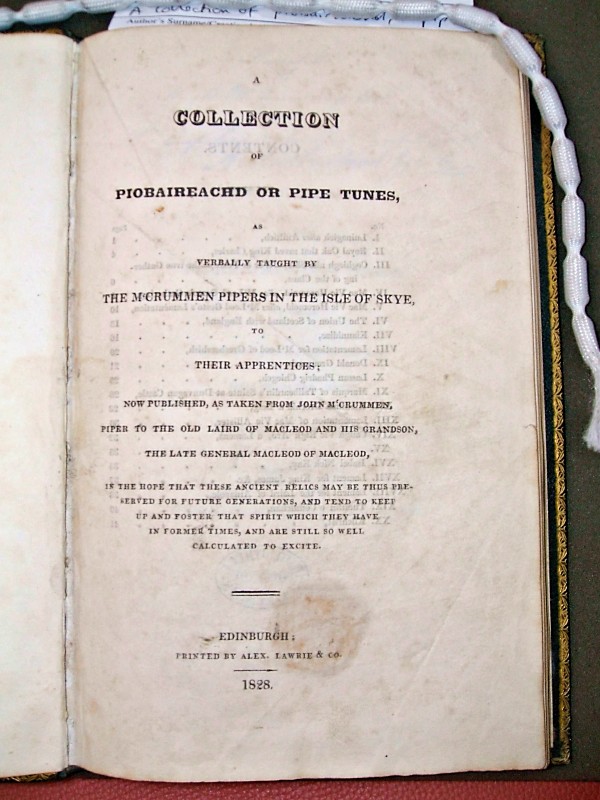
A collection of piobaireachd, or pipe tunes : as verbally taught by the M’Crummen pipers in the Isle of Skye to their apprentices / now published, as taken from John M’Crummen … [by Neil MacLeod, Gesto]. Edinburgh : Printed by Alex. Lawrie & Co., 1828. New College Library Gaelic Collections 137
The volume is on display as part of THE PIPER’S WHIM: Exhibition of Historic Bagpipes from Scotland, England and Ireland, a special exhibition showing the full variety of bagpipes played in Britain from the past 250 years. These include Lowland and Border pipes, the more familiar Highland bagpipe, Northumberland smallpipes and Irish union or uillean pipes. The exhibition explores the traditions of piping, pipemaking and bagpipe ownership.
The Hammond Organ in history
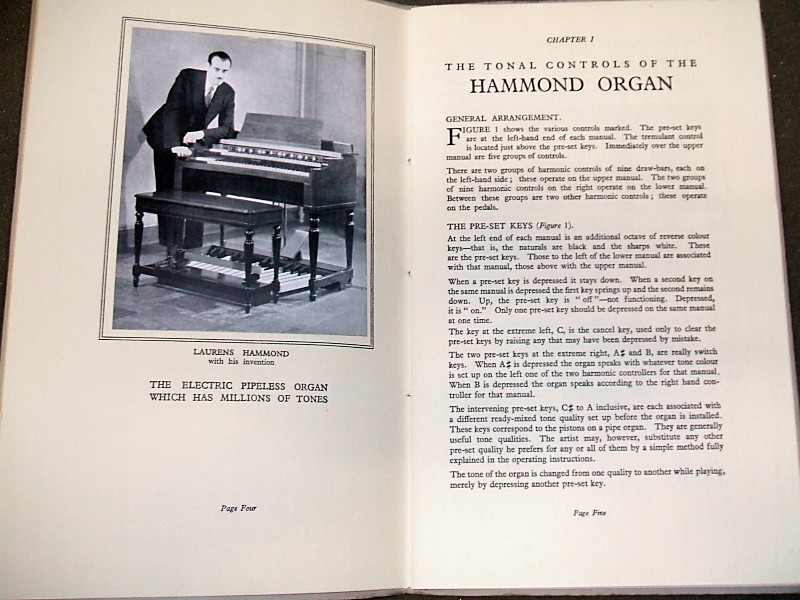 Today, 11 January, is the anniversary of the birth of Laurens Hammond, inventor of the Hammond organ. New College Library holds this pamphlet, The Hammond Organ, published in the 1930s, in the Hymnology collections.
Today, 11 January, is the anniversary of the birth of Laurens Hammond, inventor of the Hammond organ. New College Library holds this pamphlet, The Hammond Organ, published in the 1930s, in the Hymnology collections.
Patented eighty years ago in 1933-4, the Hammond Organ was aimed at church and domestic use, and it offered a new and cheaper alternative to the traditional pipe organ for church music. Later, it became popular for jazz, blues and rock music, as well as for church and gospel music.
Laurens Hammond was awarded the Franklin Institute’s John Price Wetherill Medal in 1940 for the invention of the Hammond electric organ.
This item was recently catalogued as part of the Funk Cataloguing Projects at New College Library.
Psalms for St Cecilia’s Day
The feast of St Cecilia’s Day is traditionally celebrated on November 22nd. A 3rd century martyr, St Cecilia is known as the patron saint of musicians. Her legend relates that, as a young Christian, she was betrothed to a pagan but she had already vowed her virginity to God. As the organs played at at her wedding feast, Cecilia sang (in her heart) to the Lord, asking that her heart remain pure.
Here’s a book of Psalms to remember her by. Thomas Moore’s Psalm singers’ pocket companion is a publication from the revival era known as Gallery Psalmody, where leading singers and choir were located in a loft of the church. The new style lasted for about a century from 1755, and its main features were choirs singing in harmony of usually three parts, with some solo sections. Thomas Moore (- d. 1792) was a music teacher from Manchester Cathedral who came to Glasgow to teach singing.
 This item is small, or pocket sized, and contains a number of manuscript doodles which may testify to the singer’s mind wandering elsewhere. Also interesting are the pages of handwritten music staves, perhaps to allow the singer to make notes of new tunes or harmonies.
This item is small, or pocket sized, and contains a number of manuscript doodles which may testify to the singer’s mind wandering elsewhere. Also interesting are the pages of handwritten music staves, perhaps to allow the singer to make notes of new tunes or harmonies.
The Psalm singers’ pocket companion belongs to the Hymnology Collection, and was catalogued as part of the Funk Cataloguing Projects. With thanks to our Project Cataloguer, Oreste de Tommaso, for supplying details of this item.
Bagpipe music of the Isles

A collection of piobaireachd, or pipe tunes : as verbally taught by the M’Crummen pipers in the Isle of Skye to their apprentices / now published, as taken from John M’Crummen … [by Neil MacLeod, Gesto]. Edinburgh : Printed by Alex. Lawrie & Co., 1828. New College Library Gaelic Collections 137
One particularly interesting and unique item in New College Library’s Gaelic Collections is an instruction book on the bagpipe (in Gaelic Pibroch, or, Ceol mor, or, literally, Big music). Entitled “A collection of piobaireachd, or pipe tunes” it includes ” Canntaireachd notation” which was a way of teaching pibroch using verbal sounds.
At first sight this looks like a collection of texts, but is actually music in the traditional ‘verbal notation’ that pipers used. It was published by Captain Niel MacLeod of Gesto, in Skye and it has a handwritten dedication to Hugh MacQueen, a Writer to the Signet.
With thanks to Patrick Murray, our Gaelic Cataloguer, for supplying details of this item.
